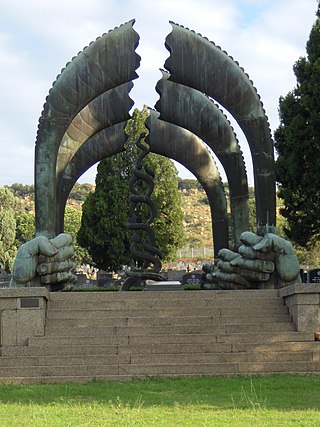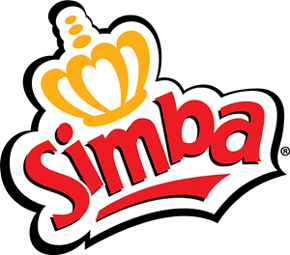
The Lion King is a 1994 American animated musical drama film produced by Walt Disney Feature Animation and released by Walt Disney Pictures. The 32nd Disney animated feature film and the fifth produced during the Disney Renaissance, it is inspired by William Shakespeare's Hamlet with elements from the Biblical stories of Joseph and Moses and Disney's 1942 film Bambi. The film was directed by Roger Allers and Rob Minkoff and produced by Don Hahn, from a screenplay written by Irene Mecchi, Jonathan Roberts, and Linda Woolverton. The film features an ensemble voice cast that includes Matthew Broderick, James Earl Jones, Jeremy Irons, Jonathan Taylor Thomas, Nathan Lane, Ernie Sabella, Rowan Atkinson and Robert Guillaume. Its original songs were written by composer Elton John and lyricist Tim Rice, with a score by Hans Zimmer.

The Lion King II: Simba's Pride is a 1998 American animated direct-to-video musical romantic drama film. It is the sequel to Disney's 1994 animated feature film, The Lion King, with its plot influenced by William Shakespeare's Romeo and Juliet, and the second installment in The Lion King trilogy. According to director Darrell Rooney, the final draft gradually became a variation of Romeo and Juliet.

The Lion King 1½ is a 2004 American animated direct-to-video musical comedy film produced by the Australian branch of Disneytoon Studios and released direct to video on February 10, 2004. The third and final installment released in the original Lion King trilogy, it is based on The Lion King's Timon & Pumbaa and serves as an origin story for the meerkat/warthog duo Timon and Pumbaa while the film is also set within the events of The Lion King. A majority of the original voice cast from the first film returns to reprise their roles, including Nathan Lane and Ernie Sabella as the voices of Timon and Pumbaa, respectively. The plot of the movie seems to be inspired by Tom Stoppard's Rosencrantz and Guildenstern Are Dead, a tragicomedy that tells the story of Hamlet from the point of view of 2 minor characters.

Simba is a fictional character and the protagonist of Disney's The Lion King franchise. Introduced in the 1994 film The Lion King, Walt Disney Animation's 32nd animated feature, the character subsequently appears in The Lion King II: Simba's Pride (1998) and The Lion King 1½ (2004) as well as the 2019 remake of the original film. Simba was created by screenwriters Irene Mecchi, Jonathan Roberts and Linda Woolverton. While Mark Henn served as Simba's supervising animator as a cub, Ruben A. Aquino animated the character as he appears as an adult.

The Lion King is a musical play based on the 1994 Walt Disney Animation Studios' animated feature film of the same name with music by Elton John, lyrics by Tim Rice, and book by Roger Allers and Irene Mecchi, along with additional music and lyrics by Lebo M., Mark Mancina, Jay Rifkin, Julie Taymor, and Hans Zimmer. Directed by Taymor, the musical features actors in animal costumes as well as giant, hollow puppets. The show is produced by Disney Theatrical Productions.
Simba is a fictional character who appears in Disney's The Lion King franchise.

Ouma is a South African rusk made from a traditional buttermilk recipe. It was first produced in the rural town of Molteno, in the Eastern Cape, by Elizabeth Ann Greyvensteyn in 1939, in response to an initiative by the town's pastor to help the entrepreneurial efforts of the women in his congregation. The brand currently dominates the relatively-small local rusk market, and is manufactured in the same town it was first produced.
In South Africa, many events and sports took place, like Rugby and Football, in 1994.
This is a list of events in South African sport in 1995.
This is a list of events in South African sport in 1996.

Simba Sports Club is a football club based in Kariakoo, Dar es Salaam Tanzania,
Zanzibar Premier League is the top division of the Zanzibar Football Association. It was created in 1926.

The Simba rebellion, also known as the Orientale revolt, was a regional uprising which took place in the Democratic Republic of the Congo between 1963 and 1965 in the wider context of the Congo Crisis and the Cold War. The rebellion, located in the east of the country, was led by the followers of Patrice Lumumba, who had been ousted from power in 1960 by Joseph Kasa-Vubu and Joseph-Désiré Mobutu and subsequently killed in January 1961 in Katanga. The rebellion was contemporaneous with the Kwilu rebellion led by fellow Lumumbist Pierre Mulele in central Congo.
The Lion King is a Disney media franchise comprising a film series and additional media. The success of the original 1994 American animated feature, The Lion King, directed by Roger Allers and Rob Minkoff, led to a direct-to-video sequel, a spin-off film, a 2019 film remake, a television film sequel, two spin-off television series, three educational shorts, several video games, merchandise, and the third-longest-running musical in Broadway history, which garnered six Tony Awards including Best Musical. The franchise, led by the musical's box office at $8.1 billion, is the highest-grossing entertainment property. The franchise as a whole has EGOT-ed, meaning it has won the four biggest awards of American show business.
The 2001 African Cup Winners' Cup was the twenty-seventh season of Africa's second oldest club football tournament organised by CAF.

Westpark Cemetery is a large cemetery in Johannesburg, South Africa, and is the resting place of some of the country's well-known citizens. It is a non-denomination designated burial ground, and thus has Christian, Jewish, Muslim and Chinese burial areas. The Jewish section contains a Holocaust Memorial, erected in 1959.

Simba (Pty) Ltd. is a South African snack food manufacturer mainly operating in South Africa. It was founded in 1957 by Leon Greyvensteyn, and acquired by PepsiCo in 1999. It is best known for manufacturing potato and maize-based snack foods. They hold 63 percent of the South African crisps market.
JS Saoura, an Algerian professional association football club, has gained entry to Confederation of African Football (CAF) competitions on several occasions. They have represented Algeria in the Champions League on two occasions and the Confederation Cup on one occasion.
Simbarashe "Simba" Mhere was a Zimbabwe-born South African actor, presenter and television personality. He is best known for winning the 2010 Top Billing Presenter Search.











